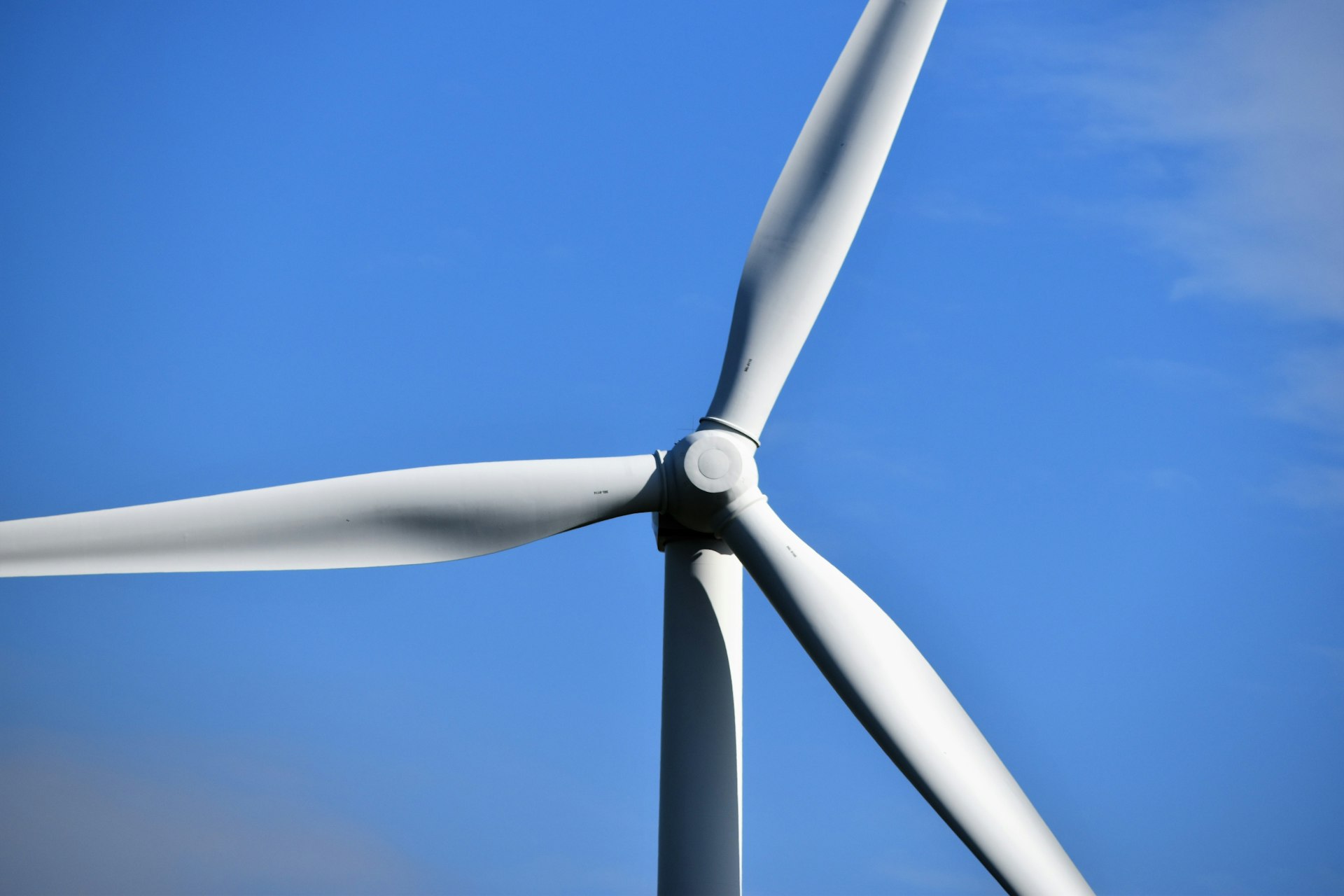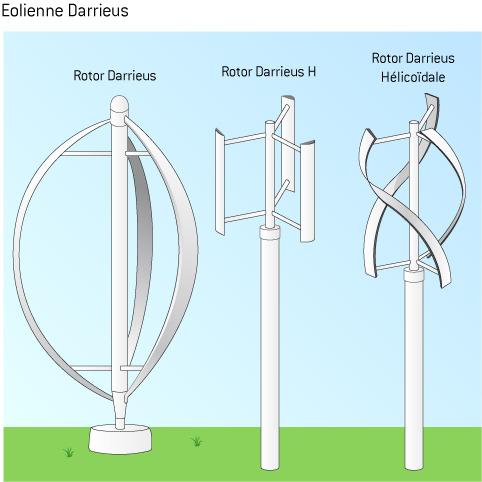Working principle for wind turbine
The operation of a wind turbine is relatively simple, we can summarize:
- The wind blows on the blades and makes them turn.
- The rotor transmits the rotation of the blades to the electric generator.
- The generator converts mechanical energy into electrical energy.
- The inverter converts alternating electric current into direct electric current.
- Direct electric current is injected into the electrical network.
Wind power P_wind = 0.5 * A * ρ * V^3, where A = the swept area of the blades, ρ = the air density and V = the wind speed. We see that the wind speed is the determining parameter in the total wind power.
It should also be noted that a wind turbine can never exceed the efficiency of 59.3%, which is called the Betz limit.
Two main types of wind turbine are:
HAWT ( Horizontal axis wind turbine) | VAWT (Vertical axis wind turbine) |
All rights reserved FT Media
|
All rights reserved FT Media |
|
|
Regardless of the type of wind turbine, the components are similar: the blades, the rotor, the nacelle, the mast, the generator, the inverter and the control system.
Today, large horizontal axis wind turbines (HAWT) dominate the wind energy market worldwide, mainly due to their high efficiency.
We focus on small wind turbines, up to 50 kW, for residential or agricultural applications. In particular, we focus on the development of vertical axis wind turbines (VAWT), which offer several advantages over HAWT wind turbines: quiet operation (<55 dBA), low wind speed start-up, making them more suitable for residential and even urban applications.
It is true that at present, the installation of a domestic VAWT wind turbine requires planning permission, and its relatively high cost can discourage investment in this type of energy. Nevertheless, we remain convinced that VAWTs are an excellent complement to a photovoltaic installation. With this in mind, we are developing financing solutions to better meet market needs.
Despite the many advantages of small VAWT wind turbines, it is important to take into account local weather conditions, especially wind speed, which is a key factor for energy production. It is therefore strongly recommended to call on a specialized company to avoid any unpleasant surprises.




